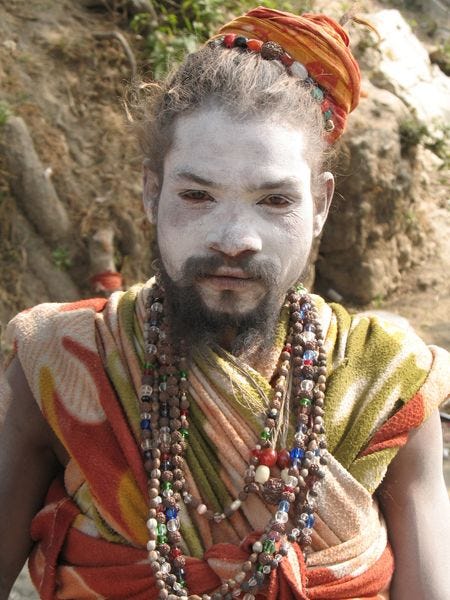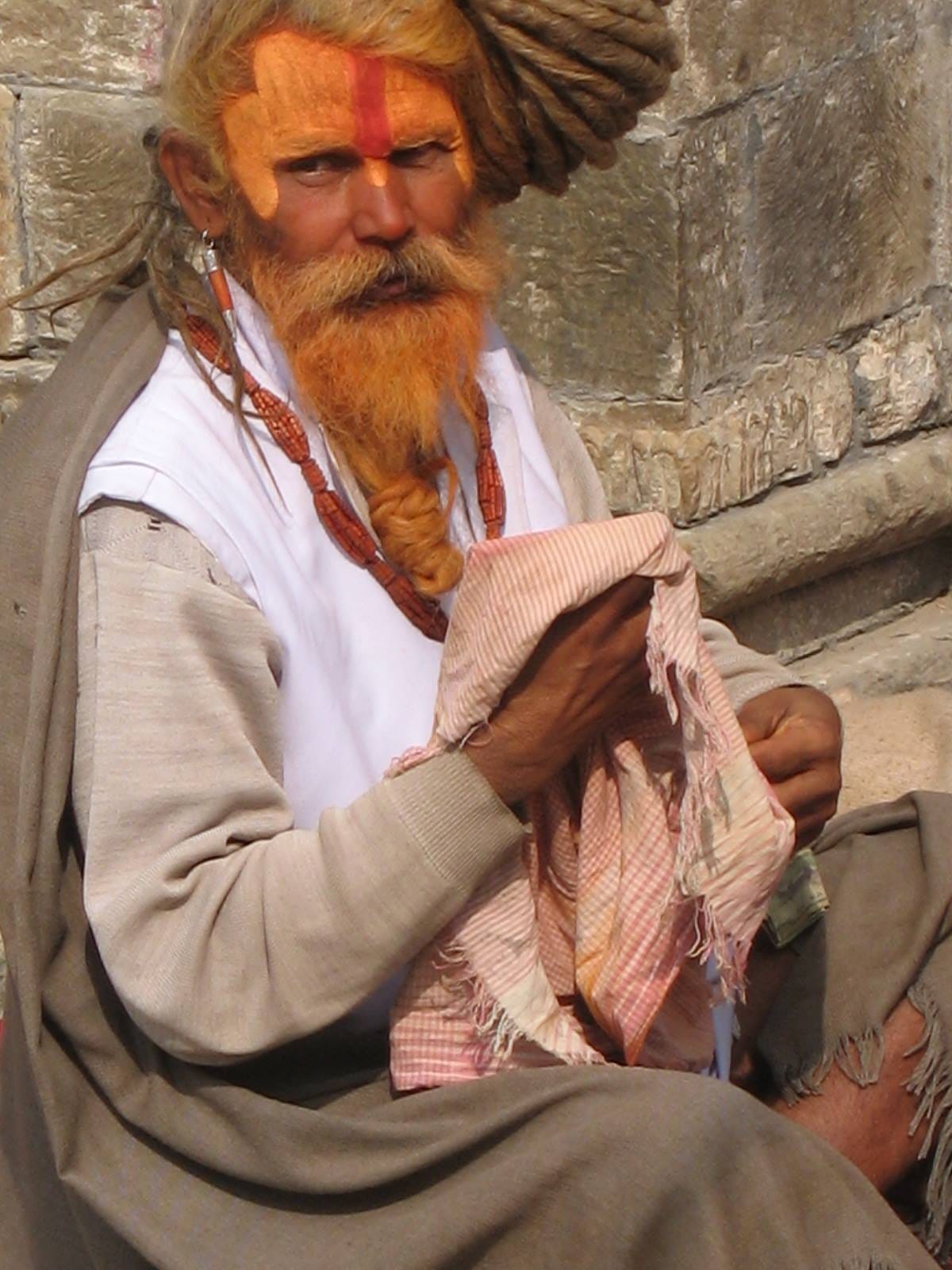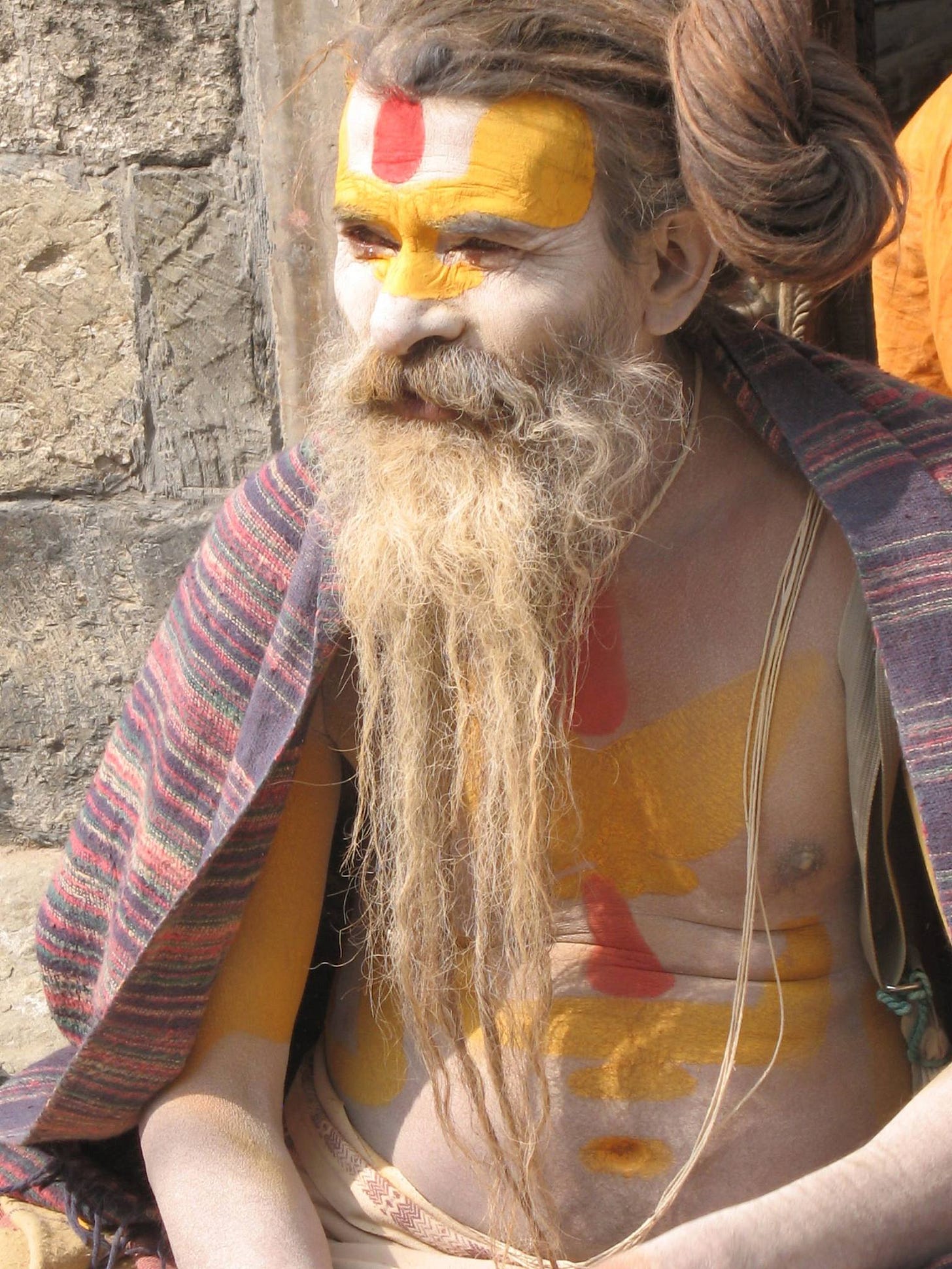Kathmandu, with its bustling streets, timeless temples, exotic religious rituals, and a unique cultural tapestry, has always held a special allure for travelers and devotees alike. I first visited this enchanting city back in 2012 both as a google-eyed tourist and enthusiastic devotee. I wasn’t disappointed.
My first and perhaps most interesting port of call was Pashupatinath (literally meaning Lord of all Beings) - the ancient patron-deity of Nepal, and site of one of most sacred temples in the Hindu world. Pashupatinath is a picturesque, sprawling temple complex on the banks of the Bagmati River. Its origins are lost in the mists of time.
Pashupati is an intriguing welter of paradoxes: sacred and profane, eternity and ephemeral, life and death. It is a space where opposites coexist, where the mundane rituals of daily life intertwine seamlessly with profound spiritual significance. Here, the boundaries between the transient and the eternal blur, creating a mosaic of contrasts that invite reflection, reverence, and wonder.
The sacred temple grounds resonate with the rhythmic chants of mantras or incantations, the mellifluous voices of devotional singers, the soul-stirring beat of a dholak and not to forget, the auspicious sound of temple bells that seem to gently tug at your heartstrings. Hundreds of prayers appear to defy gravity, reaching for the heavens. Yet, woven into this wonderful symphony are the heart-rending wails of those bidding final farewells, their grief raw and unguarded. Outside the temple, on the ghats of the sacred Bagmati River, flames dance and crackle as earthly bodies are consigned to ash, a stark reminder of life’s impermanence. Here, amidst the smoke of of incense and smoke of the funeral pyre, the divine and the mortal meet—an unsettling harmony where life, death, and eternity converge in a single moment.
But among all the memories etched in my mind, my encounter with the ash-smeared, pot-smoking babas of the holy Pashupatinath Temple remains the most vivid. These ascetic holy men, with their heavily braided hair, and strikingly colorful 'Hindu marks' on their foreheads and torsos, are as much a part of the temple’s landscape as its ancient architecture and religious traditions.
These babas appear to have made a home for themselves at the shrines dedicated to Lord Siva which have come up behind the Pashupati temple complex - on the bank across the Bagmati River. Their presence feels almost otherworldly—an enigmatic combination of mysticism and mundane, sacred and profane. I remember how they seemed entirely unbothered by the modern world rushing past them, sitting cross-legged, chanting softly, puffing on a cigarette, or simply gazing into the distance with a meditative calm. So were they genuine seekers of the Divine, or were they counterfeits? Were they posing for shutterbugs in search of exotic images? Or were they just putting up a show for gullible devotees looking for answers to their problems? It’s difficult to say for sure, but my guess is that most of them were not genuine articles. They were there to make a fast buck by making a spectacle of themselves!
Interestingly, their global fame has grown hand in hand with the rise of social media and the Internet. If you were to do a quick Google search for ‘Pashupatinath’, chances are, the image of these sadhus will appear on the first page. Over the years, they’ve become an unofficial emblem of Nepal’s holiest Hindu shrine (and World Heritage Site), drawing photographers, curious tourists, and the faithful alike. And they know it.
Approaching them with a camera is an experience in itself. They’ll meet your gaze, smile knowingly, and strike the most theatrical of poses—sometimes solemn, sometimes playful and even stern and threatening. But let’s be clear: their cooperation comes with a price. A small tip or donation is expected, and honestly, it’s a fair deal. After all, this is likely how they sustain themselves—living off the faith of devotees, and the fascination of tourists eager to capture a slice of “exotic Nepal” on their smart phones and cameras.
But beyond their photogenic appearances, desire to make a spectacle of themselves and play to the gallery lies a deeper truth. These babas represent an ancient ascetic tradition, one that renounces worldly attachments in pursuit of spiritual liberation. While their methods and lifestyles may seem unconventional to outsiders, and in many cases, may even hide an ugly visage of drug dealing, theft and violence, they embody a philosophy that has been a cornerstone of Hindu spirituality for centuries.
As I left Pashupatinath that day, I couldn’t help but marvel at the contrasts that define Kathmandu—a city where ancient spirituality coexists cheek by jowl with modern-day living. Even today, I find myself revisiting those moments, reflecting on the blend of sacred and surreal that makes places like Pashupatinath unforgettable.
Visiting Kathmandu was more than just a trip; it was a journey into a world that feels timeless yet vividly alive. If you ever find yourself in this magical city, let the babas of Pashupatinath remind you to pause, reflect, and embrace the curious wonder of life.
.







